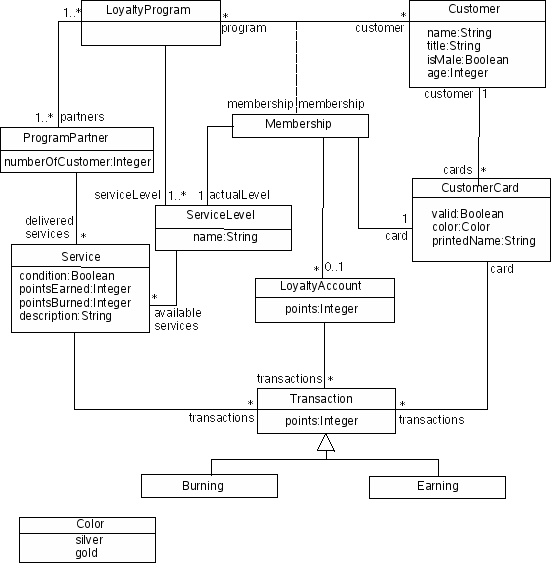1
General Board / Re: How to elide superclass property membership?
« on: August 04, 2008, 08:00:31 pm »
Hi, I looked into this further, and I still can't figure out a way to do this, so I'm bumping this message up to see if anyone has any other ideas.
I want to elide the superclass qualifier on attributes that are inherited when showing the subclass.
For example, Parent class has attribute called "foo" and Child class has attribute called "bar".
When I show Child class I see this in attributes compartment:
Parent::
foo : int
bar : int
I want to get rid of the Parent:: qualifier. I tried several things in Feature Visibility dialog to no avail.
I looked into creating a custom ShapeScript to do this, but had no luck.
Does anyone have any clue if this can be done?
FYI: the reason for desiring this behavior is that the UML in question is a specification, and the published specification has different audiences. Some audiences will not care about this superclass relationship, and it will only cause confusion when reading the spec..but we need to maintain this relationship for modeling/software purposes.
TIA
I want to elide the superclass qualifier on attributes that are inherited when showing the subclass.
For example, Parent class has attribute called "foo" and Child class has attribute called "bar".
When I show Child class I see this in attributes compartment:
Parent::
foo : int
bar : int
I want to get rid of the Parent:: qualifier. I tried several things in Feature Visibility dialog to no avail.
I looked into creating a custom ShapeScript to do this, but had no luck.
Does anyone have any clue if this can be done?
FYI: the reason for desiring this behavior is that the UML in question is a specification, and the published specification has different audiences. Some audiences will not care about this superclass relationship, and it will only cause confusion when reading the spec..but we need to maintain this relationship for modeling/software purposes.
TIA


 -- taken from this website:
-- taken from this website: 